



In this section, you will examine the changes in American music and its impact on American culture over time.
Are you familiar with these artists? Click on each image to learn more.
Music is an integral part of American culture. There are various genres of music, and the lyrics and sounds reflect the time in which they were created. American music is created to entertain, but it is also created to inspire.
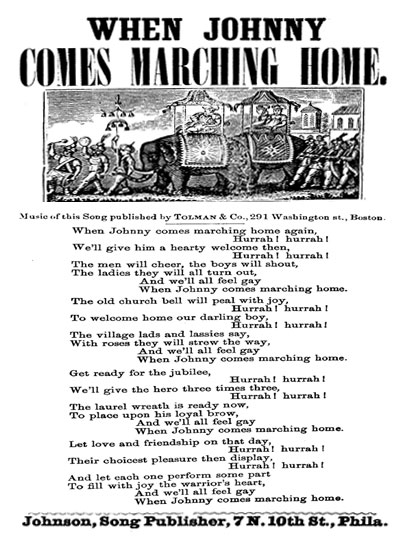
Source: CW106530, Library of Congress
For example, When Johnny Comes Marching Home was written during the Civil War in 1863. This song was used to express the feelings of those who had loved ones involved in the Civil War.
Click on the link below to listen to the song.
![]() When Johnny Comes Marching Home
When Johnny Comes Marching Home
Analyzing a Song- Based on what you know about the song and its lyrics, who is “Johnny” in the song?

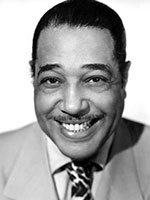
American Music has often been created as a result of the human and geographic factors. From 1910 to 1940, many African Americans left southern states to look for better social and economic conditions. This geographic change inspired a cultural change. Many African Americans who left the South moved to New York, namely Harlem, bringing with them cultural traits.
African Americans brought music, which was known as “race music,” with them to New York. The blend of southern and northern musical roots created a new sound that initiated the Jazz Age. Composers and singers, such as Duke Ellington, made music during a broader movement, the Harlem Renaissance.
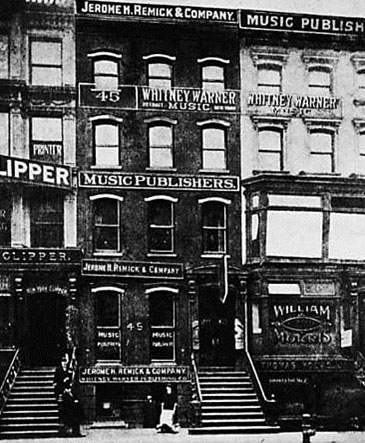
Source: Tinpanalley, Qwertyuiop900, Wikimedia
At various times throughout U.S. history, music has been at the core of a cultural movement. Tin Pan Alley, located in Manhattan, New York, was a block of buildings that housed music publishing houses. For nearly 70 years, from 1800 to 1953, Tin Pan Alley was a music publishing capital--the place where the most popular music in the United States was created.
The publishers at Tin Pan Alley produced sheet music that was either produced or sold directly to the public to play at home. Look at the evolution of Tin Pan Alley on the following chart.
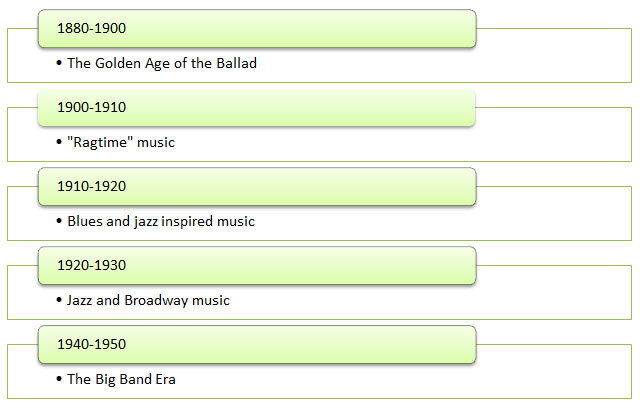
By the 1950s, technology had changed the way that people played and listened to music. The radio had become the most popular way people listened to music, causing Americans to buy less sheet music. By 1953, a new genre of music, rock ‘n’ roll, had taken over the airwaves.
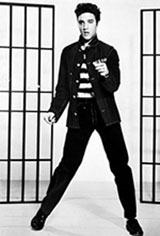
Entertainers like Elvis Presley and Chuck Berry dominated the radio, and later television, capturing teenage fans across America.
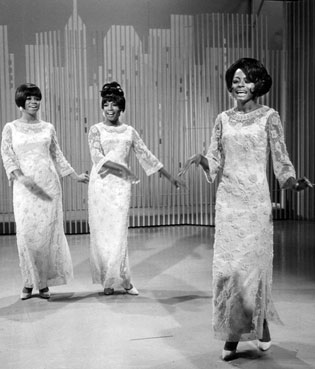
Source: The Supremes 1966, We Hope, Wikimedia
As the 1950s came to a close, a new musical sound was born. In January 1959, Berry Gordy, an African-American songwriter, founded Motown Records with an $800 loan from family members. Named after the nickname for Detroit, the city in which it was founded, Motown introduced popular music that captured audiences across America, regardless of race and socioeconomic status. Many famous recording artists, such as Stevie Wonder, Marvin Gaye, and The Supremes (pictured above), started their careers at Motown. Motown lasted until 2005 when it was merged with another record company.
Click on the link below to access a timeline of Motown Records.
![]() Scroll over the images to read about their influence on American music.
Scroll over the images to read about their influence on American music.
Analyzing the Painting - Scroll over each of the five scenes to determine the roots of country and western music as depicted by the artist. What do you see?

The mural above depicts five scenes that represent the roots of country music as interpreted by painter Thomas Hart Benton. The mural was done when Benton was 85; it was a reflection of his study and travels through the rural South. Benton closely studied the history of music in the South. As country music was changing, Benton felt that the history of the music was slowly fading. His painting helps preserve the history.
Country music is historically rooted in the folk music played throughout the American South. By the mid-1920s, country music had developed into a separate music industry. The storytelling nature of the genre provided an escape for listeners who were dealing with the problems of the Great Depression. By the 1950s, country music had evolved into a new sound that was tinged with a bit of rock ‘n’ roll. The country music sound continues to evolve.
Sources for images used in this section, as they appear, from top to bottom: